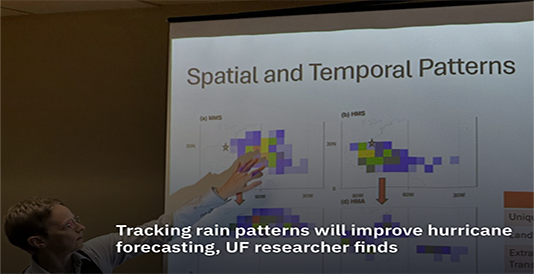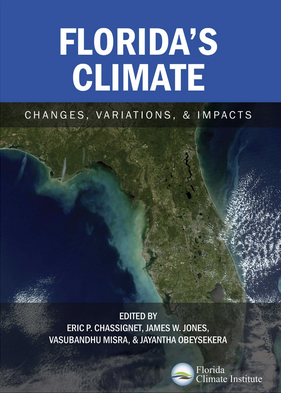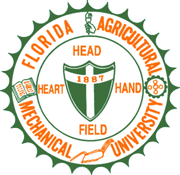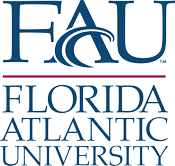Contact Person: This email address is being protected from spambots. You need JavaScript enabled to view it.
Collaborators: G. Baigorria, L. DeWayne Cecil, , J. Jones
Institutions: Columbia University, University of Florida
Funding Agency: NASA
Start: March 2010 End: February 2012
Status: Funded
Filed Under: Climate Sciences
Abstract: The overall objective of this project is to evaluate the impacts of uncertainty throughout the climate impacts assessment process to identify the most crucial options and provide more robust analysis for climate change decision support, thereby improving risk management and the development of sustainable adaptation strategies in the agricultural sector. NASA remote sensing tools (including several high-resolution precipitation products and surface insolation measurements) and modeling systems (including the Modern Era Retrospective Analysis; MERRA) will also be introduced into the impacts assessment process and their impacts on final decision support estimated. Three specific objectives for this project come from investigations of uncertainties introduced in the selection of assessment options in each of the three major steps of climate impacts assessment
- To determine how the selection of data for a baseline climate record, used to represent a historical period for the calibration of the impacts assessment model, affects projected climate impacts and related decision support in the agricultural sector in Gulf Coast States.
- To determine how the selection of a climate impacts assessment model, along with its management options and level of generality, affects projected climate impacts and related decision support in the agricultural sector in Gulf Coast States.
- To determine how the selection of a method to produce future climate scenarios and the parameters capable of changing under future climate conditions affect projected climate impacts and related decision support in the agricultural sector in Gulf Coast States.
Contact Person: Zimmerman, Andrew
Collaborators: A. Zimmerman
Institutions: University of Florida
Funding Agency: NSF
Status: Funded
Filed Under: Land, Terrestrial Ecosystems
Contact Person: Martin, Tim
Collaborators: W. Cropper, T. Martin
Institutions: University of Florida
Funding Agency: National Institute for Climatic Change Research
Status: Funded
Filed Under: Climate Sciences, Land, Terrestrial Ecosystems
Contact Person: Misra, Vasubandhu
Collaborators: Misra, V.
Institutions: Florida State University
Funding Agency: USGS
Status: Funded
Filed Under: Terrestrial Ecosystems, Climate Sciences
Abstract: La Florida, the “Land of Flowers” straddles the latitudes that form the northern hemisphere’s desert belt. Orlando lies one degree of latitude south of Cairo, Egypt. Florida’s uniqueness lies in the fact it is a long narrow peninsula surrounded on three sides by warm water. How will Florida’s biodiversity respond to a changing climate? Which species and habitats will increase and which will decrease? What role does human induced land use – land cover (LULC) change play? Before these questions can be answered, accurate regional climate change scenarios must be developed. We propose to down-scale predictions from a suite of coupled Atmospheric-Ocean General Circulation Models (AOGCMs) to make regional scale predictions for the Florida peninsula. We will run three scenarios of LULC: past (circa 1900), present, and future (2030-2050). Additional model runs will address the contribution of green house gasses to climate variability and change over the Florida peninsula. Model perturbation experiments will be performed to address sources of variability and their contribution to the output regional climate change scenarios. We will develop scenarios that specifically address potential changes in temperature (land and near sea surface) and rainfall fields over the peninsula. These outputs will then be used as inputs to a suite of species / habitat / ecosystem models that are currently being used as part of the Comprehensive Everglades Restoration Plan as a proof of concept that down-scaled climate results can work in ecological forecast models. We will then provide these scenarios and modeling results to resource management groups (NGOs, state and federal) via workshops in which the scenarios will be used to predict responses of additional selected species, habitats and ecosystems. This research addresses several of the fundamental charges of the NCCWSC – downscaling GCMs for regional predictions, regional ecological models and risk assessment.
Contact Person: Chassignet, Eric
Collaborators: F. Coleman, D. Dukhovskoy, S. Morey , A. Todd
Institutions: Florida State University
Funding Agency: Northern Gulf Institute
Status: Funded
Filed Under: Coastal Ecosystems
Abstract: A regional ocean model, together with analysis of in situ and remotely sensed data, is used to investigate the circulation on the northern West Florida Shelf that can impact transport pathways for reef fish larvae. Several species, with gag grouper being a key species, spawn in the winter and spring months near the shelf edge, with juveniles appearing several weeks to a couple of months later in the nearshore sea grass beds. The mechanisms by which the larvae transit the shelf can depend on wind-driven circulation patterns, that exhibit strong interannual variability, and interaction with larval behavior. This project aims to understand the transport mechanisms and how the variability can affect annual recruitment.
Opportunities
Funding
- Resilience: Vulnerability and resilience management for socio-environmental systems in exposed territories | October 17, 2025 (Pre-Proposals)
- NSF Atmosphere Cluster (AGS-AC) | ongoing
- NSF Geospace Cluster (AGS-GC) | ongoing
- Duke Energy Foundation | Ongoing

















